Results 11,531 to 11,540 of 12089
Thread: Anandtech News
-
07-08-22, 08:45 AM #11531
Anandtech: Jasper Lake Fanless Showdown: ECS LIVA Z3 and ZOTAC ZBOX CI331 nano UCFF P
Intel's Jasper Lake series of products based on the Tremont microarchitecture was launched in early 2021. Since then, we have seen a steady stream of notebooks and motherboards / mini-PCs based on those processors getting introduced in the market.
Ultra-compact form-factor (UCFF) machines based on the Atom series offer attractive entry-level options in the NUC domain. Their low-power nature also lends itself to passively cooled designs. Today, we are looking at two different fanless Jasper Lake UCFF PCs - the ECS LIVA Z3 and the ZOTAC ZBOX CI331 nano.
Our investigation into the performance and behavior of the two PCs revealed some interesting insights into fanless system designs. Read on for a detailed look at what 6W Jasper Lake SKUs can deliver for traditional PC workloads, along with some guidelines on what to look for in passively cooled systems.
More...
-
07-11-22, 08:46 PM #11532
Anandtech: Kingston DataTraveler Max UFD Series Review: New Type-A Thumb Drive Retain
Kingston's new products in the portable flash-based external storage space have met with good market reception over the last year or so. Two products in particular - the Kingston XS2000 and the DataTraveler Max - continue to remain unique in the market with no other comparable products being widely available. The Kingston DataTraveler Max USB flash drive (UFD) was introduced in August 2021. It advertised 1GBps-class speeds, low power consumption, and a Type-C interface - all in a thumb drive form-factor. Today, Kingston is expanding the DT Max series with three new drives - all sporting a USB 3.2 Gen 2 Type-A interface. Read on for a detailed look at the performance and characteristics of the new DTMAXA drives.
More...
-
07-14-22, 10:37 AM #11533
Anandtech: Intel Atlas Canyon (NUC11ATKPE) and GEEKOM MiniAir 11 UCFF PCs Review: Des
Intel's low-power Tremont microarchitecture has powered a range of products - from the short-lived Lakefield, to Elkhart Lake in the embedded space, and finally, Jasper Lake in the client computing area. A steady stream of notebooks and motherboards / mini-PCs based on Jasper Lake have become available since the introduction of the series in early 2021. Given their pricing, ultra-compact form-factor (UCFF) machines based on Jasper Lake offer attractive entry-level options in the NUC domain. With a range of SKUs specified for power consumption numbers ranging from 4.8W up to 25W, the product series lends itself to designs that can be either actively or passively cooled. Last week, we had taken a look at two fanless Jasper Lake PCs. Today's review takes a look at two actively cooled Jasper Lake UCFF systems - the Intel's flagship Atlas Canyon NUC (NUC11ATKPE), and GEEKOM's MiniAir 11.
More...
-
07-19-22, 07:57 PM #11534
Anandtech: The Montech Century Gold 650W PSU Review: The New Kid Starts Out Strong
In today's review, we are taking a look at the Century Gold 650W, an 80Plus Gold certified power supply by Montech. Montech is a Taiwanese company that was founded just six years ago, and yet they already managed to penetrate into the international PC power & cooling market with some surprisingly premium products.
More...
-
07-19-22, 07:57 PM #11535
Anandtech: Western Digital 22TB WD Gold, Red Pro, and Purple HDDs Hit Retail
Western Digital's 'What's Next' event back in May 2022 had seen the announcement of its 22TB platform based on ePMR and OptiNAND (with ArmorCache). At the event, WD indicated that the 22TB 10-platter drives would make its market appearance under different product categories - Ultrastar DC HC570 for data centers and enterprises, WD Gold for enterprises, SMEs, and SMBs, WD Red Pro for SMB and SME NAS systems, and WD Purple Pro for surveillance network video recorders.
Today, WD is announcing retail availability of these models along with technical details. All drives have a 3.5" form-factor and sport a SATA 6 Gbps interface. The drives are equipped with a 512MB cache and have a 7200 rpm spindle speed. The acoustics rating for all of them are the same too - 20 dBA at idle and 32 dBA for the average seek.
Based on the above specifications, it is clear that Western Digital has taken the ePMR / OptiNAND / triple-stage actuator platform and tweaked the firmware suitably to cater to different market segments. The Red Pro CMR drive comes with NASware 3.0 firmware that includes features such as adjusting parameters based on the integrated multi-axis shock sensor, maintaining balance using the dual-plane balance control technology, and TLER (Time-Limited Error Recovery) configuration for compatibility with various NAS systems. As is customary for the Red Pro family, the new 22TB drives are recommended for usage in systems with up to 24 bays.Western Digital 2022 22TB Hard Drives - Metrics of Interest WD Gold WD Red Pro WD Purple Pro Rated Workload (TB/yr) 550 300 550 Max. Sustained Transfer Rate (MBps) 291 265 265 Rated Load / Unload Cycles 600K 600K 600K Unrecoverable Read Errors 1 in 10E15 1 in 10E13 1 in 10E15 MTBF (Hours) 2.5M 1M 2.5M Power (Idle / Active) (W) 5.7 / 9.3 3.4 / 6.8 5.6 / 6.9 Warranty (Years) 5 5 5 Pricing $600 $600 $600
The WD Purple Pro drives meant for network video recordings has firmware tweaked for continuous sequential writes to multiple drive regions simultaneously. WD indicates the capability of the drive to handle up to 64 concurrent HD stream recordings at 3.25 Mbps, and up to 32 streams for machine learning / object detection tasks. Similar to NASware 3.0 in the Red Pro, the custom firmware has a specific moniker - AllFrame AI.
The WD Gold is the flagship in today's retail launch announcement. It's firmware is tweaked for the highest possible performance, without focusing on the active and idle power numbers. The ArmorCache feature is specifically turned on in the WD Gold 22TB model only.
Interestingly, all the three drives have been launched with the same MSRP of $600. Even though the WD Red Pro has a much lower workload rating, peak performance number, and reliability metric (MTBF), it appears that WD believes the market will be willing to pay a premium for the lower power consumption numbers.
The overall push with these high-capacity hard drives is one of TCO. The ability to reduce physical footprint of storage servers for the same capacity can result in significant savings in allied IT costs related to power, cooling, and rack space. Moving forward, WD can hopefully address the plateauing of access speeds compared to capacity (using dual-actuators or some other similar technology). This can make high-capacity HDDs attractive to home consumers / prosumers who may be rightly worried about long RAID rebuild times.
More...
-
07-20-22, 01:15 PM #11536
Anandtech: Samsung Portable SSD T7 Shield Review: Flagship PSSD Gets IP65 Avatar
Samsung's lineup of portable SSDs has enjoyed tremendous success, starting with the T1 back in 2015. The company has been regularly updating their PSSD lineup with the evolution of different high-speed interfaces as well as NAND flash technology. Earlier this year, Samsung launched the Portable SSD T7 Shield, a follow-up to the Portable SSD T7 (Touch) introduced in early 2020. Samsung is mainly advertising the ruggedness / IP65 rating of the T7 Shield as a selling point over the regular Portable SSD T7 and T7 Touch. Today's review takes a look at the performance and value proposition of the Portable SSD T7 Shield. Our detailed analysis reveals another trick that Samsung has up their sleeve, which makes the T7 Shield a worthy successor to the Portable SSD T7 family.
More...
-
07-21-22, 11:52 PM #11537
Anandtech: TSMC and ASML: Demand for Chips Remains Strong, But Getting Fab Tools Is H
TSMC's revenue this year is going to set an all-time record for the company, thanks to high demand for chips as well as increased prices that its customers are willing to pay for its services. While the company admits that demand for chips aimed at consumer devices is slowing, demand for 5G, AI, HPC, and automotive chips remains steady. In fact, TSMC's main problem at present is getting more fab equipment, as ASML and other tool firms and reporting that demand for semiconductor production tools significantly exceeds supply.
Last week TSMC posted its financial results for the second quarter of 2022. The company's revenue hit a record $18.2 billion, which was a year-over-year increase of 43.5%. The company revealed that while its sales were up 55% and 65.3% in April and May (respectively), its revenue in June was 'only' up 18.5% YoY, which indicates a slowdown in sales growth.
Demand for Client Devices Slowing
"Due to the softening device momentum in smartphone, PC and consumer end market segments, we observe the supply chain is already taking action and expect inventory level to reduce throughout the second half 2022," said C.C. Wei, chief executive of TSMC, at the company's earnings conference call.
While we can only speculate on this, it looks like some of TSMC's customers reduced their orders for client-oriented chips after Russia started a full-scale war against Ukraine in late February. TSMC charges/recognizes revenue when it delivers chips/wafers to a client.
Production cycle for chips on modern process technologies is well over 60 days depending on complexity and the number of layers: N16 is ~60 days, N7 is 90+ days, N5 is probably well over 100 days. These nodes account for 65% of TSMC's revenue. So, if clients started to wind down orders in March and April as they anticipated increasing inflation and uncertainty among the end user, the effect will be seen in June, which is what can be observed in TSMC's reports.
TSMC admits that demand for client-oriented chips is softening, but demand for chips designed to support 5G, AI, and HPC applications still exceeds the company's abilities to supply.
"While we observe softness in consumer end market segments, other end market segments such as data center and automotive-related remain steady," said Wei. "We are able to reallocate our capacity to support these areas. Despite the ongoing inventory correction, our customers' demand continues to exceed our ability to supply. We expect our capacity to remain tight throughout 2022 and our full year growth to be mid-30% in U.S. dollar terms."
Advanced Nodes to Remain Growth Drivers, Expansions Getting Tougher
Over half of TSMC's revenue (51%) comes from chips made using its advanced fabrication technologies (N7 and thinner nodes), which is not particularly surprising as TSMC is one of the only two contract foundries that offer such sophisticated manufacturing processes to clients.
These technologies will be among TSMC's main growth drivers in the coming years, especially as more customers adopt N7 and more advanced technologies. But more N7/N6 and N5/N4 orders mean that TSMC will need to build more capacity for these nodes, as well as more capacity for N3 and subsequent nodes, which is why the company estimated that its CapEx this year would reach $40 billion – $44 billion.
"With the successful ramp of N5, N4P, N4X, and the upcoming ramp-up of N3, we will expand our customer product portfolio and increase our addressable market," said the head of TSMC. "The macroeconomic uncertainty may persist into 2023, our technology leadership will continue to advance and support our growth. […] We believe the fundamental structural growth trajectory in the long-term semiconductor demand remains firmly in place. "
The world's No. 1 contract maker of semiconductors also urges customers to migrate from older nodes to 28nm and specialty technologies as this will ensure capacity availability (as TSMC plans to expand capacity for 28 nm and specialty nodes by 50% by 2025) and denser designs potentially with more features.
Building additional leading-edge, 28 nm, and specialty capacities not only requires massive investments, but TSMC needs to procure additional semiconductor production tools. Whether TSMC is building capacities for its brand-new N3 node or 28nm/specialty technologies, it should be noted that the company needs all kinds of lithography machines for them. An N3-capable fab needs dry litho tools, immersion litho scanners, and EUV-capable equipment. Without required number of dry and immersion scanners, an advanced EUV machine on its own will be useless. Meanwhile, lithography tools are not the only machinery that a fab needs.
Apparently, demand for fab equipment is so high that TSMC will not be able to spend its CapEx budget this year, and some purchases related to advanced (N7 and thinner) and mature nodes will be delayed into 2023. As a result, TSMC's CapEx this year will be at a lower end of the company's prediction (around $40 billion) not because it does not want to invest, but because it cannot invest in tools that are not available.
"Our suppliers have been facing greater challenges in their supply chains, which are extending tool delivery lead times for both advanced and mature nodes," said Wei. "As a result, we expect some of our CapEx this year to be pushed out into 2023."
ASML Confirms Record Quarterly Bookings
Meanwhile, ASML, the world's largest producer of lithography tools, this week posted its Q2 2022 revenue of €5.431 billion, a 53% increase year-over-year. During the second quarter, the company supplied (recognized revenue) a total of 91 new lithography systems (up from 59 in Q2 2021), with 12 of those being EUV systems (up from 3 in Q2 2021).
What is perhaps more important is that ASML's net bookings for new systems totaled €8.461 billion during the quarter, so the company's bookings are higher than its quarterly sales. Meanwhile, ASML's backlog now totals €33 billion and spans multiple years to come, which essentially is a yet another confirmation that it is extremely hard for companies like TSMC to get new tools.
The backlog for DUV machines is now at around 600 units and product order lead time for a new DUV scanner is now about two years. The backlog for EUV tools is well over 100 machines. Meanwhile, ASML says that PO lead time metrics is not exactly relevant since it faces supply chain and own production capacity issues, which means that its partners have to build additional capacity and ASML has to build additional capacity (which takes time) and only then it will be able to supply the tools ordered recently.
For the whole year 2022, ASML expects to ship 55 extreme ultraviolet (EUV) lithography scanners, but recognize revenue of 40 EUV systems valued at €6.40 billion (€160/$140 million per machine) because 15 EUV machines will be so-called fast shipments — a shipment process that skips some of the testing at ASML's factory and then final testing and formal acceptance are performed at the customer site (which is why revenue acceptance gets deferred). The company also intends to supply 240 deep ultraviolet (DUV) litho tools this year. ASML expects its production capacity to total 60 EUV scanners and 375+ DUV tools in 2023.
Summary
While demand for chips aimed at client/consumer devices is getting softer due to rising inflation and geopolitical uncertainty, the global megatrends like 5G, AI, HPC, and autonomous vehicles are still there and these require loads of advanced system-on-chips, specialty processors, and not-so-advanced things like sensors. Therefore, TSMC is confident of strong demand for chips in the coming years.
But there is a problem with meeting that demand as TSMC is not the only company that is expanding its manufacturing capacity. ASML's backlog now includes over 100 EUV scanners and around 600 DUV scanners — it will take years for the company to ship these machines. As a result, TSMC has problems with obtaining tools it needs to build additional capacity it needs. It is unclear whether the company has enough capacity to meet all of the potential demand from its largest customers on N3, N4, N5 nodes (Apple, MediaTek, AMD, NVIDIA, etc.), but, ultimately, tool shortages will affect all of its process technologies.
More...
-
07-22-22, 08:57 AM #11538
Anandtech: Intel NUC11TNBi5 and Akasa Newton TN Fanless Case Review: Silencing the Ti
Intel's Tiger Lake-based NUCs have been shipping for well over a year now. Supply chain challenges have been impacting availability of different models in different regions, but that has not prevented Intel's partners from delivering complementary products. Akasa, a well-known manufacturer of thermal solutions for computing systems targeting varied markets, has been maintaining a lineup of passively-cooled cases for Intel's NUCs since 2013. We had reviewed the Akasa Turing chassis for the Bean Canyon NUC a couple of years back, and had come away pleasantly surprised. Today's review presents results from our comprehensive evaluation of the Tiger Canyon NUC (NUC11TNKi5). It also describes the process for installing the kit's board (NUC11TNBi5) in the Akasa Newton TN chassis before analyzing its thermal performance characteristics. Read on to find out whether Akasa has managed to replicate the success of the Turing - Bean Canyon combination.
More...
-
07-26-22, 03:35 PM #11539
Anandtech: Micron’s 232 Layer NAND Now Shipping: 1Tbit, 6-Plane Dies With 50% More I/
Ahead of next week’s Flash Memory Summit, Micron this morning is announcing that their next-generation 232 layer NAND has begun shipping. The sixth generation of Micron’s 3D NAND technology, 232L is slated to offer both improved bandwidth and larger die sizes – most notably, introducing Micron’s first 1Tbit TLC NAND dies, which at this point are the densest in the industry. According to the company, the new NAND is already shipping to customers and in Crucial SSD products in limited volumes, with further volume ramping to take place later in the year.
Micron first announced their 232L NAND back in May during their Investor Day event, revealing that the NAND would be available this year, and that the company intended to ramp up production by the end of the year. And while that yield ramp is still ongoing, Micron’s Singapore fab is already capable of producing enough of the new NAND that Micron is comfortable in announcing it is shipping, albeit clearly in limited quantities.
From a technical perspective, Micron’s 232L NAND further builds upon the basic design elements Micron honed in that generation. So we’re once again looking at a string stacked design, with Micron using a pair of 116 layer decks, up from 88 layers in the previous generation. 116 layer decks, in turn, are notable as this is the first time Micron has been able to produce a single deck over 100 layers, a feat previously limited to Samsung. This in turn has allowed Micron to produce cutting-edge NAND with just two decks, something that may not be possible for much longer as companies push toward designs with over 300 total layers.
Micron’s NAND decks continue to be built with their charge-trap, CMOS under Array (CuA) architecture, which sees the bulk of the NAND’s logic placed under the NAND memory cells. Micron has long cited this as giving them an ongoing advantage in NAND density, and that’s once again on show for their 232L NAND. According to the company they’ve achieved a density of 14.6 Gbit/mm2, which is about 43% denser than their 176L NAND. And, according to Micron, anywhere between 35% to 100% denser than competing TLC products.
The improved density has allowed Micron to finally produce their first 1Tbit TLC die, which from a productization standpoint means that Micron can now also produce 2TB chip packages by stacking 16 of their 232L dies. This is good news for SSD capacities, which at the high-end are often limited by the number of packages that can be placed. Though it does mean that there’s a potential loss of performance at lower capacities due to a decrease parallelism from implementing fewer packages.Micron 3D TLC NAND Flash Memory 232L
(B58R)176L
(B47R)Layers 232 176 Decks 2 (x116) 2 (x88) Die Capacity 1 Tbit 512 Gbit Die Size (mm2) ~70.1mm2 ~49.8mm2 Density (Gbit/mm2) 14.6 10.3 I/O Speed 2.4 MT/s
(ONFi 5.0)1.6 MT/s
(ONFI 4.2)Program Throughput ? ? Planes 6 4 CuA / PuC Yes Yes
At the same time, Micron has also been working on the size of their chip packaging, and as a result while the larger capacity means that their die size has increased on a generational basis (we estimate ~70.1mm2 given Micron’s density figures), they’ve still shrunk their chip packaging by 28%. As a result, a single chip package is down from 12mm x 18mm (216mm2) to 11.5mm x 13.5mm (~155mm2). So for Micron’s downstream customers, the combination of the greater capacity and physically smaller packages for Micron’s NAND means that device manufacturers can cut down on the amount of space they allocate to NAND packages, or go the other direction and try to cram in even more packages into a similar amount of space.
Besides density improvements, the latest generation of Micron’s NAND is also allowing the company to upgrade their hardware to take advantage of newer I/O technologies, as well as to implement their own improvements to increase transfer speeds. The big news here is that Micron has increased the number of planes within their NAND die from 4 to 6, further improving the parallelism available within each die. Quad (four) plane designs became common in the previous generation of NAND, and as the density of NAND grows, so too are the number of planes in order for transfer rates to keep up with these greater densities. Micron has confirmed that the planes in 232L NAND offer independent reads, though they aren’t being quite as explicit on what kind of wordline dependencies remain for writes.
This increase in parallelism, along with improved internal transfer rates, has allowed Micron to significantly improve their per-die read and write speeds. According to the company, read speeds have improved by over 75% over their 176L generation NAND, and meanwhile write speeds have outright doubled.
Coupled with this, Micron has also implemented the latest generation of ONFi on their peripheral logic. Finalized in 2021 and now rolling out in the first NAND products, ONFi increases controller-NAND transfer rates by 50%, bringing it to 2400MT/second. ONFi 5.0 also introduced a new NV-LPDDR4 signaling method, which is available with the same 2400MT/s rate but, as it’s based on LPDDR technology, consumes less power. According to Micron, they’re seeing per-bit energy transfer savings of over 30%, which makes for a significant reduction in energy consumption. Though as always with these sorts of comparisons, it’s worth noting that the bandwidth gains exceed the energy savings (50% vs. 30%), so our expectation is that overall energy consumption is going to go up for high-performance products that run at the fastest speeds supported by Micron’s 232L NAND.
As for productization, Micron is pitching 232L NAND as a full stack replacement for 176L NAND – meaning that Micron considers it suitable for everything from mobile and IoT to clients and data center products. To that end, the company is already making initial shipments to their customers, including their own Crucial subsidiary. As with past generations of Micron NAND, starting early with Crucial allows the company to get some hands-on experience in developing full-featured products with their new NAND before they roll it into their own enterprise equipment. Interestingly, however, Micron isn’t announcing any new Crucial products right now, which strongly implies that Crucial is going to begin implementing the new NAND in existing products. If that’s the case, then Crucial customers will want to pay attention to what’s going on and what revision of a drive they’re buying, as the larger 1Tb die could have performance implications for products originally designed around 512Gbit dies.
Wrapping things up, today’s announcement should be the tip of the iceberg for Micron’s 232L shipments. With volume ramping expected to continue through this end of this calendar year, Micron’s plans call for the company to significantly increase the amount of next-generation NAND they’re shipping, going well beyond these initial volumes. Ultimately, this means that products equipped with 232L NAND are going to be relatively sparse for this year, and will pick up in 2023 following the volume ramp. So while Micron’s 232L NAND is indeed shipping, from a consumer standpoint we’re likely still several months off (or more) from seeing it becoming a common fixture in SSDs and other products.
More...
-
07-28-22, 08:23 AM #11540
Anandtech: Silicon Motion Announces SM8366 PCIe 5.0 x4 NVMe Controller and MonTitan S
In the lead up to the Flash Memory Summit next week, many vendors have started announcing their new products. Today, Silicon Motion is unveiling their first enterprise-focused PCIe 5.0 NVMe SSD controllers set. These controllers find themselves embedded in a flexible turnkey solutions platform encompassing different EDSFF standards. A follow-up to the SM8266 introduced in November 2020, the SM8366 and SM8308 belong to Silicon Motion's 3rd Generation enterprise NVMe controller family.
Hyperscalers / cloud vendors require turnkey reference designs to quickly evaluate the capabilities of new controllers. In enterprise applications, the controller hardware is only half the story. The associated firmware / SDK, and user-programmability to enable customer differentiation are also key aspects. Keeping this in mind, Silicon Motion is also putting focus on the SM8366 reference design by giving it a separate moniker - MonTitan.Silicon Motion's 3rd Generation Enterprise SSD Controllers SM8366 SM8308 Host Interface PCIe 5.0 x4 / x2 (dual-port x2+x2 or x1+x1 capable) NAND Interface 16ch, 2400 MT/s 8ch, 2400 MT/s DRAM 2x 40-bit DDR4-3200 / DDR5-4800
(32-bit data + 8-bit ECC per channel)Max. SSD Capacity 128 TB Sequential Read 14 GB/s Sequential Write 14 GB/s Random Read 3 M IOPS Random Write 2.8 M IOPS Namespaces Up to 128, with a total of 1024 queue pairs
The MonTitan platform refers to the turnkey design / firmware development platform based on the OCP Data Center NVMe SSD and NVMe 2.0 specifications. Hyperscalers can readily deploy the MonTitan platform into their infrastructure for evaluation, while datacenter SSD vendors can use it to make and market their own datacenter and enterprise SSDs. The platform is currently available in U.2, E1.S, and E3.S form-factors.
Silicon Motion claims that the platform's ASIC and firmware combination architecture allows enabling of enterprise-level security without compromising on performance and QoS. Towards this, they are touting two key features - PerformaShape and NANDCommand.
NVMe SSD controllers can present the SSD as multiple distinct storage volumes each with its own I/O queue to the host system (namespaces). The PerformaShape algorithm can optimize the SSD performance differently for each namespace using per-namespace user-defined QoS settings. Silicon Motion claims true hardware isolation in this case to deliver maximum bandwidth while ensuring that latency, QoS, and power targets are met / obeyed. The NANDCommand feature refers to Silicon Motion's use of real-time machine learning along with the LDPC engine to help with endurance (paritcularly important for QLC).
The claimed performance numbers for the SM8366 controller can vary for specific designs depending on the NAND technology, number of dice, and form-factor power limitations. The company indicated that specific numbers for different form-factor reference designs will be announced later. Sampling is slated to begin in Q4 2022.
Silicon Motion's press release shows the usual suspects providing supporting quotes - Micron, KIOXIA, and YMTC from amongst the NAND suppliers. Alibaba Cloud has also expressed interest in evaluating the platform, which bodes well for Silicon Motion's enterprise SSD controller efforts.
More...
Thread Information
Users Browsing this Thread
There are currently 11 users browsing this thread. (0 members and 11 guests)





 Quote
Quote
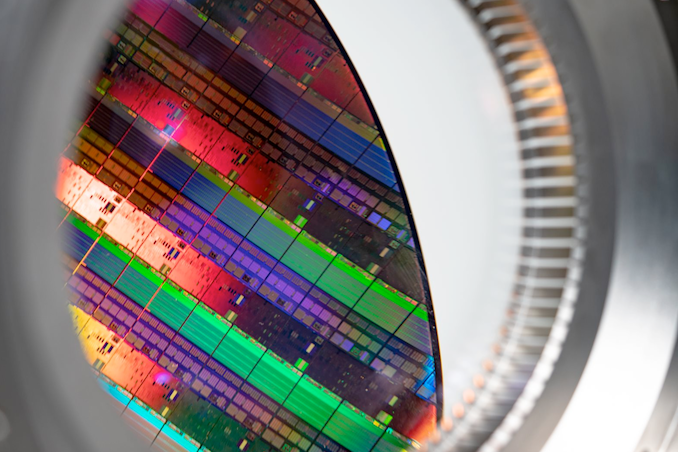
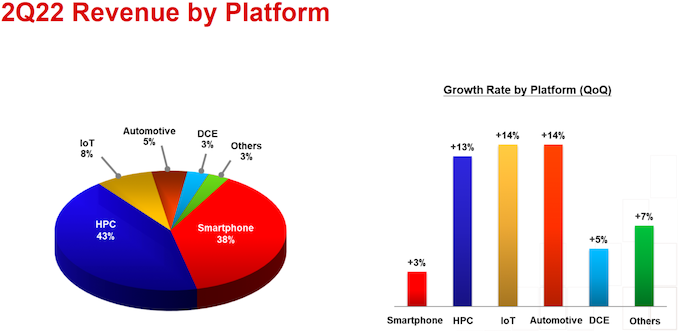
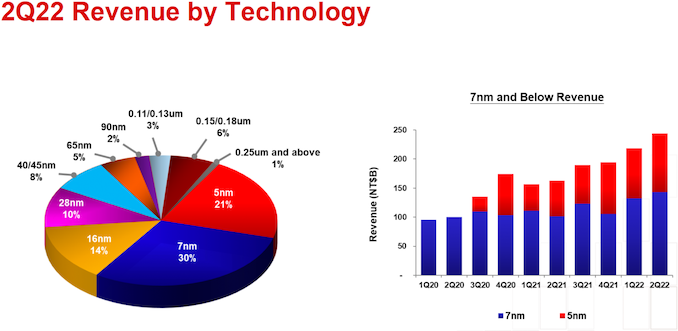
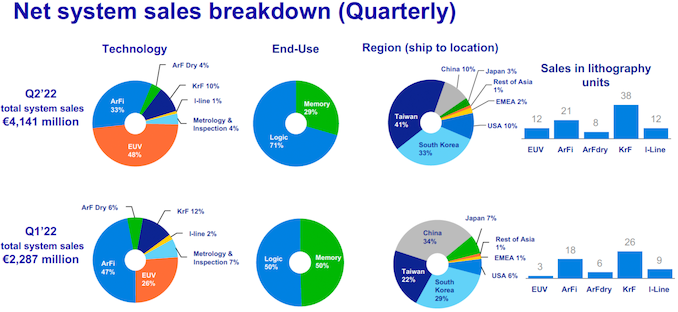
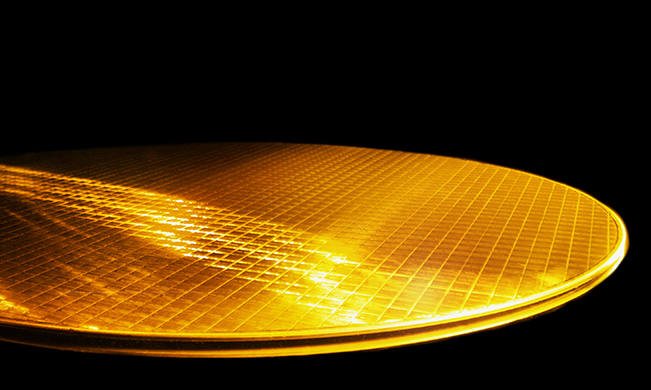
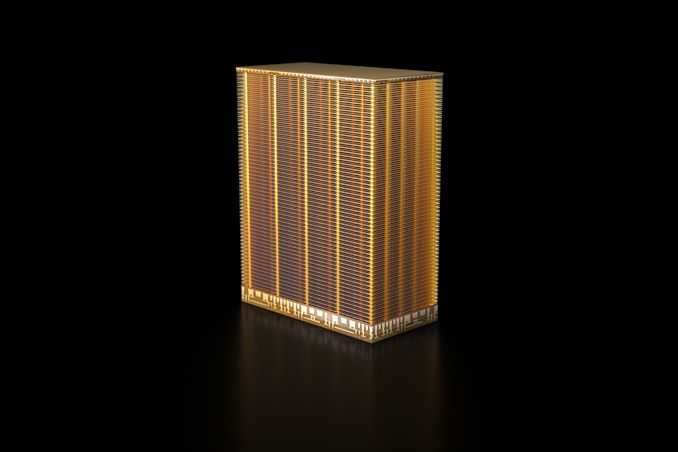
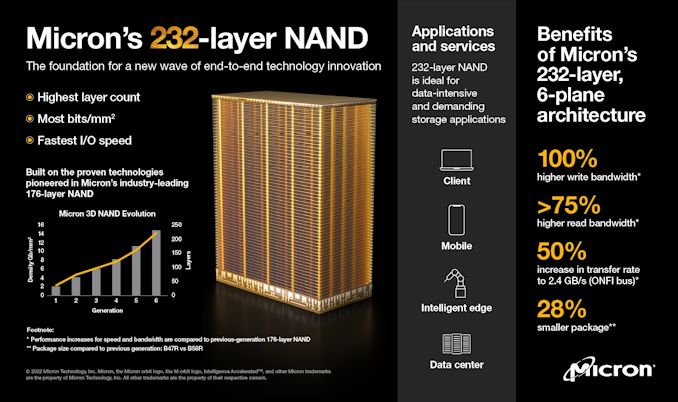

















Bookmarks